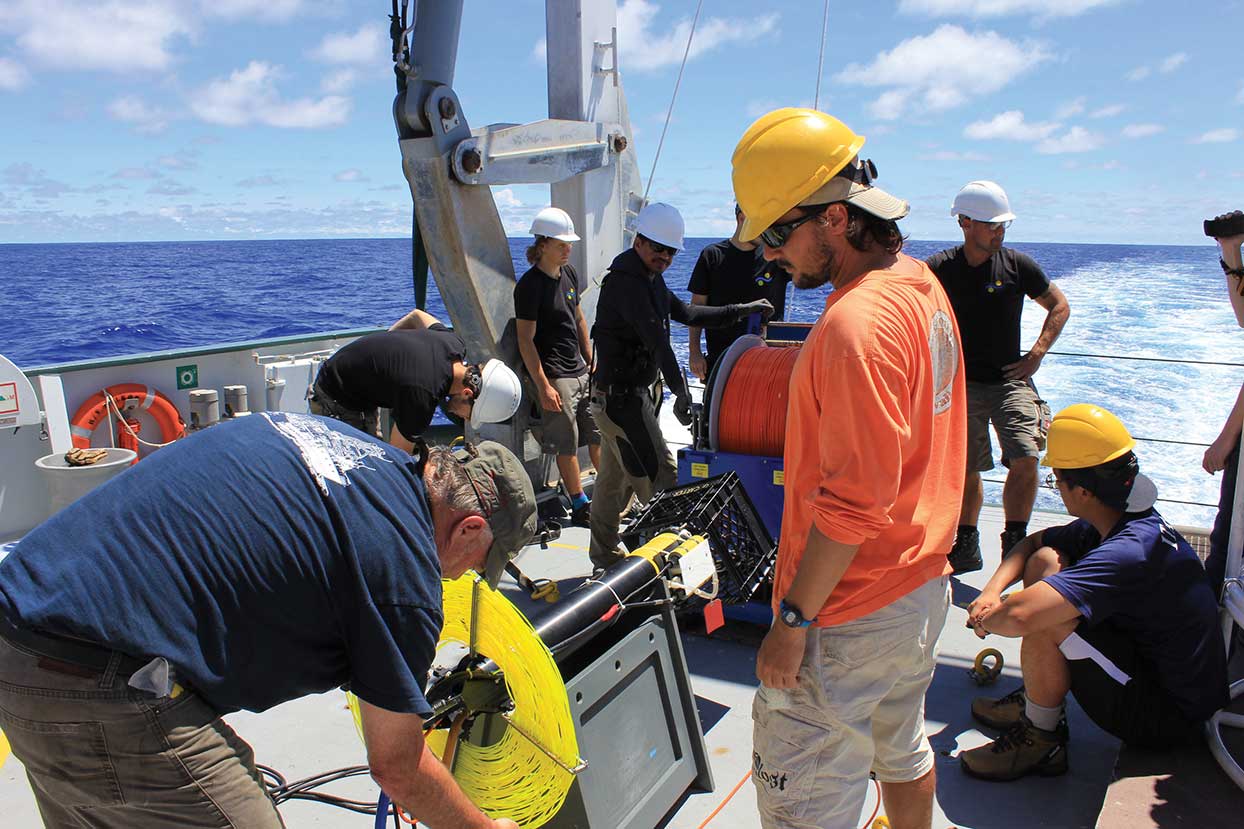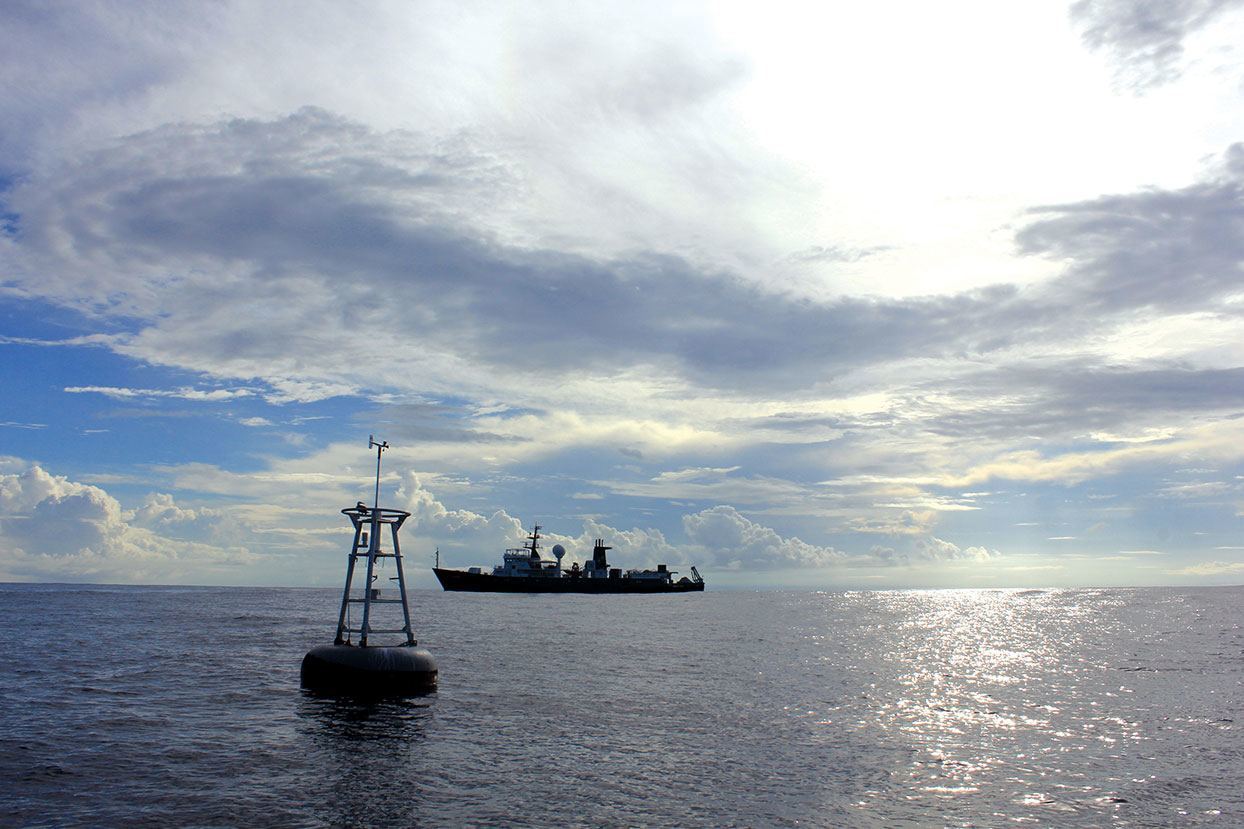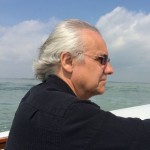Falkor sailed across the central equatorial Pacific in August giving researchers their first view of the water profiles in this region during El Niño conditions. The timing was perfect for this expedition, as Principal Investigator, Dr. Kelvin Richards from the University of Hawaii at Manoa, and his team completed an 11 day time-series at the equator. Dr. Richards has completed similar water profiling in the western equatorial Pacific region. However, this was the first move towards the central Pacific, to observe if mixing trends remained similar to that of data collected from previous western Pacific cruises.
The ocean helps to regulate Earth’s temperature with the movement of heat through vertical mixing in the ocean layers. However, El Niño Southern Oscillations (ENSOs) alter regular ocean temperatures with anomalously warm waters off the western coast of South America, causing climatic changes across the tropics and subtropics. The movement of ocean heat is especially important in understanding El Niño events that spawn weather shifts such as flooding in relatively dry regions of the western U.S., droughts in typically wetter regions in the western Pacific, and the lessening of trades and warmer temperatures in Hawaii.
Recent research has suggested that small-scale turbulence in the ocean plays a critical role in large ocean processes like El Niño. The science team is now analyzing the 155 CTD casts that were collected during the cruise, examining the ocean mixing patterns to improve climate models, and provide more accurate forecasting of ENSOs.
From the water profiles collected, the data indicate that there are indeed mixing patterns, perhaps even stronger than in the west, giving an indication that these features are important in turbulent mixing. The mixing is produced by a combination of factors including wind blowing across the surface of the ocean. The wind not only generates surface waves, but also produces internal waves that propagate downwards and towards the equator. Through an amalgamation of spatial and temporal sampling of the ocean, the science team was able to capture one of these waves as it descended through the thermocline. “We are seeing that the equatorial region is a special place for the production of these small vertical scale velocity structures and mixing” said Chief Scientist Kelvin Richards.
We are seeing that the equatorial region is a special place for the production of these small vertical scale velocity structures and mixing.
— Kelvin Richards

The next step for the science team is to run numerical models with some of the observed winds to cross check with the data collected. The scientists think that the water profile features may have been created with one of the westerly wind events earlier in July. These westerly winds are strongly associated with El Niño conditions. The team will run models and compare the characteristics of the waves in the model with what they are observing in the data to see if they can conclusively ascribe the conditions to this particular wind event.
The ultimate goal is to use these and similar data collected from future cruises to improve how mixing is represented in climate models, leading to better models of the El Niño Southern Oscillation. These small-scale processes have a large impact on broader ocean movement and conditions.
This was also the first cruise to implement Schmidt Ocean Institute’s new Student Opportunities Program, providing two marine science undergraduates a chance to participate in meaningful scientific research. The Student Opportunities Program aims to help train the next generation of scientists and ignite a spark for ocean exploration. One of our first participants, Julianna Diehl, returned to Falkor at the end of 2015 to work aboard the ship as a Deck Cadet as part of her continued training for a science career at sea.




